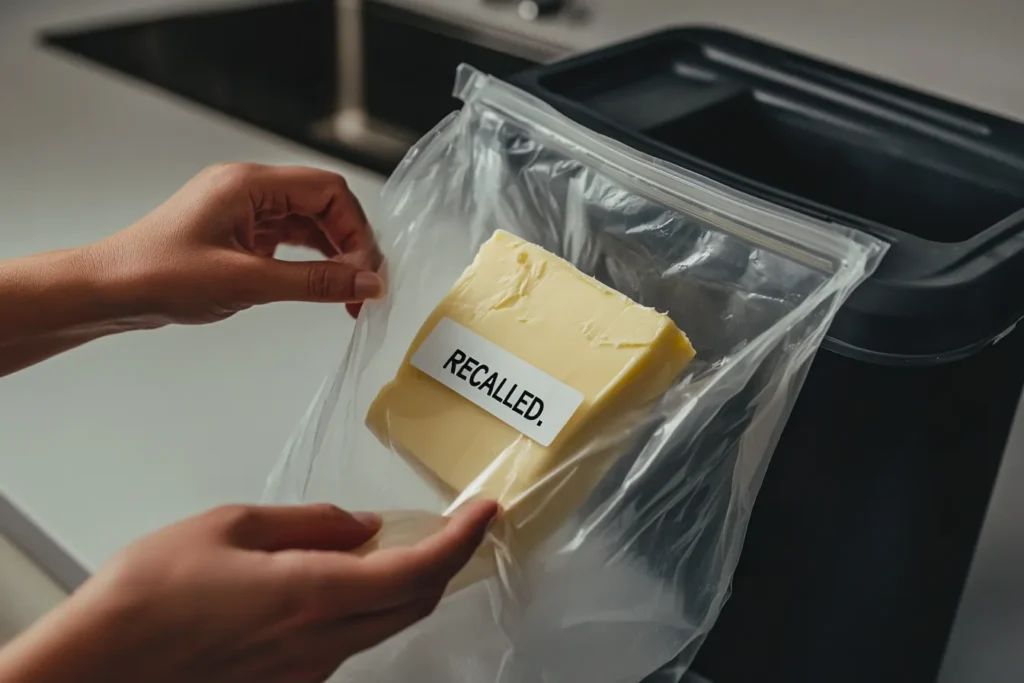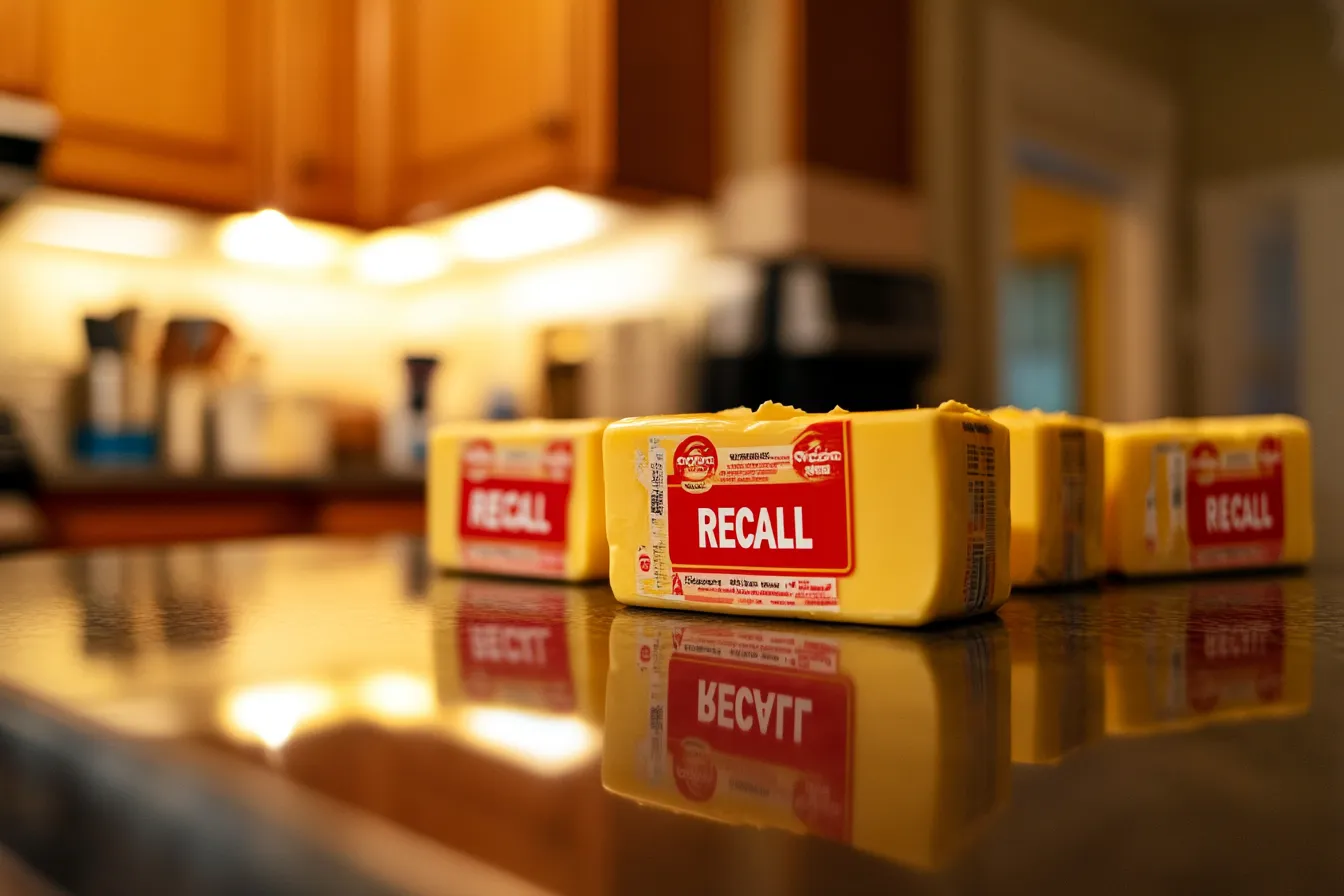Table of Contents
Introduction
Imagine opening your fridge for a morning bagel, reaching for your favorite Cabot Creamery butter—and then hearing it’s been recalled! 😱 That’s right, one of the most trusted names in dairy products recently issued a butter recall that has sent waves through households across the country. If you’re a fan of Cabot, or just want to know how a butter recall could impact your health, kitchen, and grocery habits, you’ve come to the right place.
This article dives deep into why Cabot Creamery butter was recalled, which products are affected, the possible health risks, and what you should do next. Plus, we’ll explore how the company responded, public reactions, and tips to stay safe with dairy products in the future. Let’s break the butter block down, shall we? 🧈
“Safety is our top priority. When it comes to food, there’s no room for risks,” — Cabot Creamery statement.
What Is Cabot Creamery?
A Brief History of Cabot Creamery
Founded back in 1919, Cabot Creamery is a cooperative of New England and New York dairy farmers. They’re best known for their award-winning cheeses, yogurts, and—you guessed it—butter. Over the decades, Cabot has earned a solid reputation for high-quality, all-natural dairy products, and they proudly market themselves as farmer-owned.
The Popularity and Trust of Cabot Dairy Products
Cabot Creamery has always enjoyed a strong following. Their butter, in particular, is beloved for its rich flavor and clean ingredients. You’ll find it in grocery stores, food co-ops, and restaurants across the United States. So when the news broke about a butter recall, it wasn’t just about spoiled dairy—it was a hit to consumer confidence.

Why Was Cabot Creamery Butter Recalled?
The Official Recall Statement
Cabot Creamery issued a voluntary recall of certain batches of its butter due to concerns over possible contamination and labeling errors. The company stated the recall was done “out of an abundance of caution” and emphasized that they are working closely with the FDA.
“Our goal is complete transparency. We are deeply sorry for any inconvenience and are actively resolving the issue.” — Cabot spokesperson
What Was Contaminated or Unsafe?
The recall was not due to just one issue—but a combination of possible risks that prompted Cabot to act quickly.
Possible Bacterial Contamination
Initial tests suggested that some butter batches may have been contaminated with Listeria monocytogenes, a bacteria that can cause serious illness, especially in the elderly, pregnant women, and those with weakened immune systems. Yikes! 😬 Even though no illnesses were confirmed at the time of the recall, Cabot didn’t want to take any chances.
Packaging and Labeling Errors
Another concern was a mislabeling issue—specifically, some butter sticks may not have listed allergens like dairy and soy correctly. This is a big deal for consumers who rely on accurate labeling to avoid allergic reactions.
Pro Tip: Always double-check food labels, especially if you or your family members have allergies. 🧐
Products Affected by the Recall
List of Recalled Products and Lot Numbers
Cabot Creamery released a detailed list of products involved in the recall. Here are a few of the most commonly purchased items affected:
| Product Name | Package Size | UPC Code | Lot Numbers | Best By Date |
|---|---|---|---|---|
| Salted Butter Sticks | 1 lb (4 sticks) | 021000007890 | 3025, 3026, 3027 | March 12, 2025 |
| Unsalted Butter Sticks | 1 lb (4 sticks) | 021000007891 | 3028, 3029 | March 13, 2025 |
| Sea Salt Butter Tubs | 8 oz | 021000008701 | 3030 | March 15, 2025 |
These products were distributed across multiple U.S. states and retailers, including Walmart, Whole Foods, and regional grocery chains.
How to Check If Your Butter Is Affected
So, how can you tell if your butter is part of the recall? Check:
- The UPC code on the package (usually found near the barcode)
- The “Best By” date on the label
- The lot number printed on the wrapper or carton
If any of these match the recall list, stop using the product immediately—even if it looks and smells totally normal.
“Better safe than sorry when it comes to food recalls,” says FDA Food Safety Inspector Jordan Michaels.
Health Risks Involved
Symptoms to Watch Out For
If you’ve eaten butter from a recalled batch, stay alert for the following symptoms, especially if the contamination involved Listeria:
- Fever 🤒
- Muscle aches
- Nausea or vomiting
- Diarrhea
- Headaches or confusion
These symptoms can show up within a few days to several weeks after exposure.
What To Do If You’ve Consumed Recalled Butter
First, don’t panic. If you’re feeling fine, chances are you’ll be okay. But if you develop any symptoms mentioned above—especially if you’re pregnant, over 65, or immunocompromised—contact your doctor right away.
You can also report the incident to the FDA’s MedWatch Program, which helps monitor the effects of recalled products.
🧈 BONUS: Cabot Creamery Salted Butter – Nutrition Facts & Ingredients
| Nutrition Facts (per 1 tbsp) | |
|---|---|
| Calories | 100 |
| Total Fat | 11g |
| Saturated Fat | 7g |
| Cholesterol | 30mg |
| Sodium | 90mg |
| Carbohydrates | 0g |
| Protein | 0g |
Ingredients: Pasteurized Cream (Milk), Salt
Allergens: Contains Milk
Suggested Use: Ideal for cooking, baking, or spreading on warm bread 🥖

Common Problems Caused by Recalled Dairy Products
Recalls are never good news—but when it comes to dairy, things can get extra dicey. 🥴 Butter, milk, and cheese are perishable products, and any mistake in processing or packaging can result in big health problems.
Gastrointestinal Issues
The most immediate risk from consuming recalled dairy is getting sick with foodborne illnesses like listeriosis, salmonella, or E. coli. Here’s how these bugs typically mess with your gut:
- Cramps and abdominal pain
- Nausea and vomiting
- Watery or bloody diarrhea
- Fever and chills
In most healthy people, symptoms clear up in a few days. But for some, especially the elderly or very young children, these bacteria can lead to hospitalization or worse.
“People often underestimate dairy recalls. But the risks are very real,” says Dr. Katie Monroe, Food Safety Specialist.
Risks for Immunocompromised People
Those with weakened immune systems are especially at risk. This includes people undergoing chemotherapy, transplant recipients, or anyone with chronic illnesses like diabetes or HIV.
Even a small amount of contaminated butter could trigger:
- Neurological damage
- Severe dehydration
- Systemic infection
- In rare cases, death
That’s why recalls like this aren’t just a minor inconvenience—they can truly be a matter of life and death.
How to Properly Dispose of Recalled Butter
So you’ve found a recalled pack of butter in your fridge. What now? 🤔 Don’t just toss it in the trash without taking precautions.
Safe Disposal Guidelines
Here’s how to safely get rid of contaminated dairy products:
- Do NOT consume it—even a small amount.
- Place the butter in a sealed plastic bag or container.
- Label it clearly as “Do Not Eat – Recalled”.
- Dispose of it in a secure outdoor trash bin.
- Clean any surface it may have touched using hot, soapy water or a disinfectant.
🧽 “Cleaning your fridge after disposing of a recalled item is just as important,” says CDC’s kitchen hygiene guide.
Refund or Return Procedures
Most retailers offer full refunds for recalled items. Here’s what you should do:
- Save your receipt, if you have one.
- Bring the packaging or proof of purchase to the store.
- Ask about refund or store credit options.
- If purchased online, check with customer support—many provide prepaid return labels.
Cabot Creamery has also issued instructions for direct refunds via their website and customer hotline.

Consumer Reactions and Social Media Buzz
Naturally, when word got out about the butter recall, the internet had a LOT to say. Social media exploded with hashtags like #CabotRecall and #ButterGate. 🧈📱
What People Are Saying Online
Some users shared photos of the butter they had just purchased, checking labels and dates, while others shared their frustration about not being notified sooner.
“Just bought Cabot butter LAST NIGHT. Now I see it’s on the recall list?! Great. 😒” – Twitter user @DairyQueen315
Others praised the brand for being transparent and proactive.
“Props to @CabotCreamery for owning up and putting safety first. Love the honesty. 💯” – Instagram user @organicobsessed
Statements from Cabot Creamery Fans and Critics
While some long-time fans promised to keep buying Cabot products, others were more cautious.
- “I’ve trusted them for years… but I’ll wait a while before buying again.”
- “This makes me nervous. I switched to Kerrygold for now.”
The mix of reactions shows how important brand trust is—and how fast it can be shaken by food safety issues.
Cabot Creamery’s Response and Action Plan
To their credit, Cabot Creamery didn’t go silent. In fact, their response was swift and surprisingly transparent.
Apologies, Fixes, and Transparency
The company issued multiple statements on their website and social channels, apologizing for the scare and outlining their next steps.
“We apologize sincerely to all our customers. Your safety is our highest concern, and we’re taking immediate corrective actions.”
They also launched a dedicated hotline and recall webpage with detailed instructions for consumers.
What They’re Doing to Prevent Future Issues
Cabot is now implementing:
- More rigorous product testing before shipment
- Updated allergen labeling practices
- Employee retraining programs focused on food safety
- Collaboration with third-party auditors to improve oversight
Their goal? To regain trust and prevent another incident like this.
FDA and USDA Involvement
Whenever a food recall happens, agencies like the FDA (Food and Drug Administration) and USDA (U.S. Department of Agriculture) get involved immediately.
Official Warnings and Inspection Reports
According to FDA recall reports, Cabot Creamery initiated the recall voluntarily after routine quality checks detected inconsistencies. The FDA is continuing to monitor for:
- Additional affected batches
- Possible health incidents
- Containment and correction measures
The USDA also weighed in since butter is classified under dairy products that require strict labeling compliance.
Government Advice to Consumers
Both the FDA and USDA issued guidelines for consumers:
- Do not eat the butter.
- Check all stored butter products against the recall list.
- Clean surfaces that came in contact with the recalled butter.
- Contact a healthcare provider if you feel sick.
Tips for Staying Safe with Dairy Products
Even if you dodged this recall, it’s a good time to think about food safety habits in general—especially when it comes to dairy.
How to Read Labels Carefully
Many consumers skim labels or don’t check expiration dates. Here’s what to focus on:
- Best by/Use by dates
- Lot numbers (especially during recalls)
- Allergen information
- Storage instructions
Checking Recall Alerts Regularly
Did you know you can sign up for recall alerts from the FDA and USDA? 📬 You’ll get real-time emails or texts about product recalls, including food, medicine, and household goods.
Here are a few websites to bookmark:
Frequently Asked Questions
Is all Cabot butter affected?
Nope! Only specific batches with certain lot numbers and expiration dates are affected. Check the list carefully before tossing anything.
Can I still eat my butter if it smells fine?
Absolutely not! Just because it looks or smells normal doesn’t mean it’s safe. Harmful bacteria don’t always leave visible signs.
Where can I get the most updated recall info?
Visit Cabot’s official website or the FDA Recall Database for real-time updates and recall notices.
Conclusion: What We Learned from the Cabot Creamery Butter Recall
This recall was more than just a warning label—it was a wake-up call. 🛑 No matter how trusted a brand is, mistakes can happen. But what really matters is how quickly and transparently a company responds—and in Cabot’s case, they’re working hard to make things right.
By staying informed, checking your fridge, and knowing what to do, you can protect your family and keep your kitchen a safe, butter-loving zone. 🧈💛
“Food safety isn’t about panic—it’s about preparation.” – U.S. Food Safety Council

